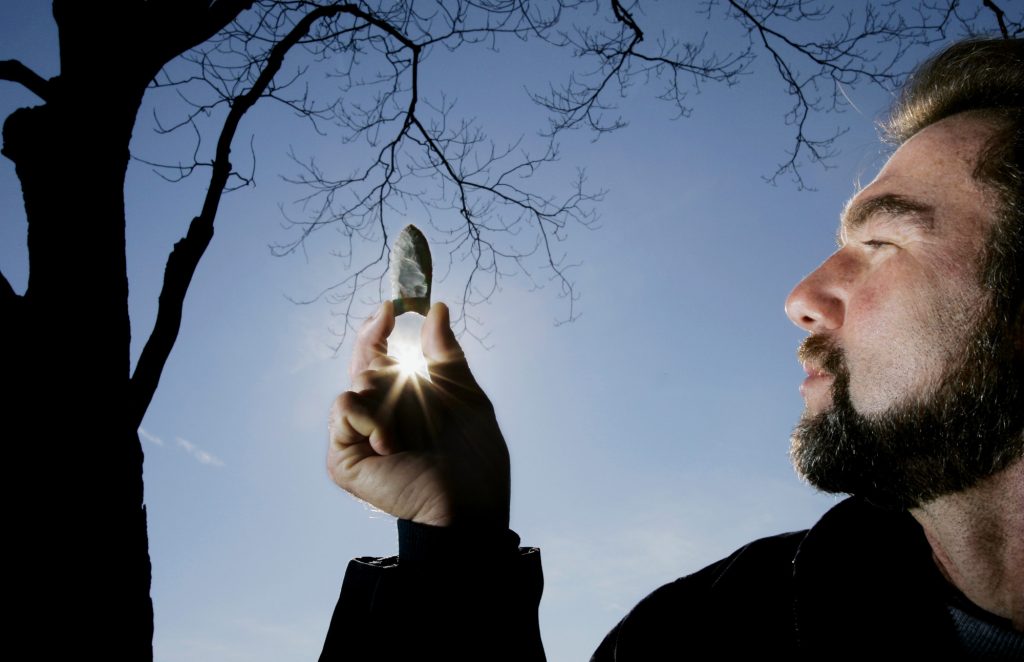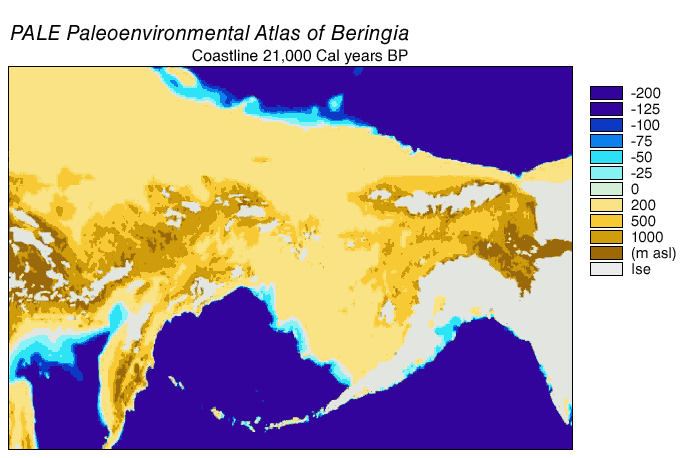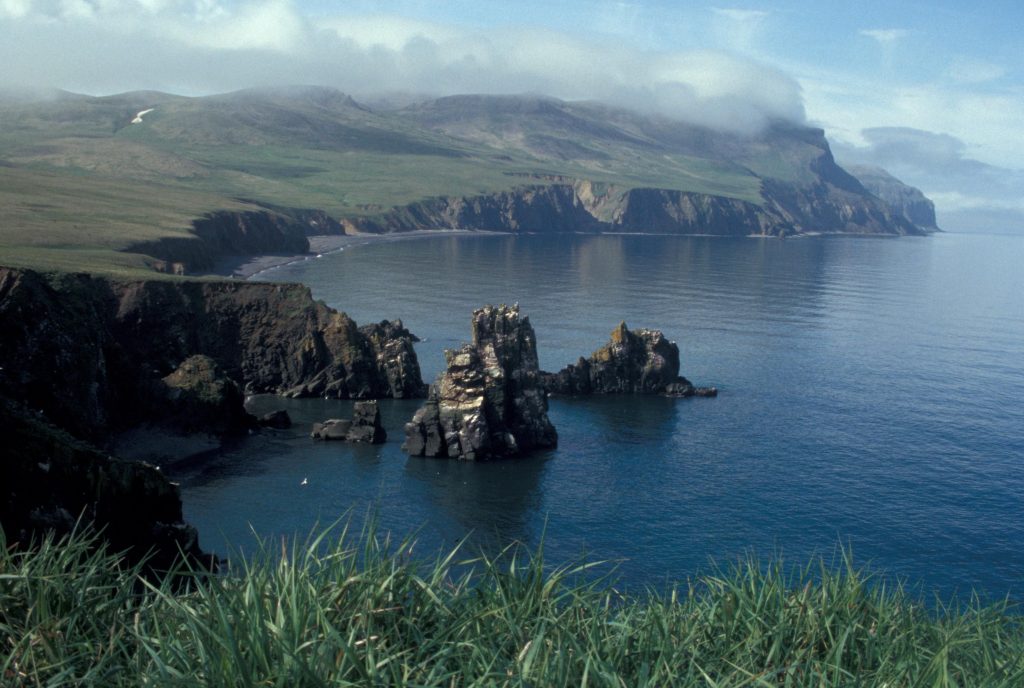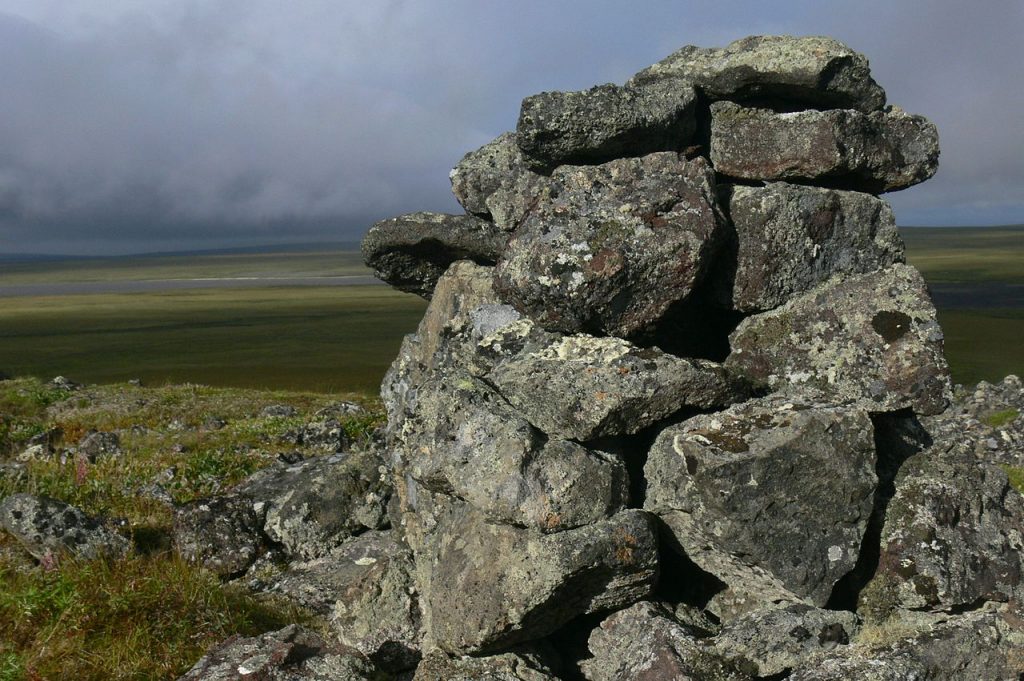Searching for the Origins of the First Americans

Nearly 30 years ago, I published a book about the first Americans called The Great Journey. At the time of my research, I found myself immersed in an academic world of sharp controversy and diametrically opposed hypotheses. Personality conflicts pitted expert against expert: Passionate advocates for Clovis—the prehistoric, Paleoindian culture that lived roughly 11,000 years ago in present-day New Mexico and elsewhere—were on one side, and those who believed in a much earlier, pre-Clovis date for first settlement, even as early as 40,000 years ago, were on the other. I was astonished by expectations that I would take sides in a controversy that had endured in one form or another since the 1920s. In the end, I carefully navigated these perilous academic shoals and gladly moved on. Since then, my interest in the subject has been somewhat tangential—until, that is, new findings about the Bering Land Bridge came along.
In recent years, the first-Americans debate has focused on pre-Clovis evidence for human settlement. Fortunately, the academic temperature has cooled somewhat. A new generation of long-term, multidisciplinary research is slowly replacing the often far-from-rigorous fieldwork of yesteryear, and paying rich dividends.
Now researchers are putting their weight behind an exciting and provocative scenario for the first settlement of the Bering Land Bridge between Siberia and Alaska. The Beringian standstill hypothesis is based on years of highly specialized, fine-grained research by scholars from many disciplines and from both sides of the Bering Strait and further afield.
The name Beringia was originally used by Swedish botanist Erik Hultén to mean the land that lies beneath the shallow waters of the Bering Strait. In 1937, he pointed out that approximately 20,000 years ago, when global sea levels were hundreds of feet below today’s levels, Siberia and Alaska were joined by a land bridge dissected by meandering rivers. About 12,000 years ago, after the oceans rose as post–ice age temperatures warmed, the land bridge mostly vanished. Beringia in the strict sense ceased to exist.
A handful of scholars still believe that the first settlers crossed oceans to arrive in the Americas. Some theorize that late ice age hunter-gatherers from Western Europe traveled by canoe along northern coastlines and ice sheets to North America. Other outlying theories hold that the first Americans crossed from Japan or some other part of Asia, or even Polynesia. There is scant evidence, however, to support any transoceanic theory. Almost every scientist agrees that the primordial Native Americans arrived from Siberia. In recent years, both molecular biology and dental research have confirmed this Siberian ancestry.
But what was life like for these people? For years, I and many others have painted a portrait of tiny bands of big-game hunters from Northeast Asia who walked on dry land from Siberia to Alaska before rising sea levels severed the land bridge. The portrait is compelling and has been the subject of several book covers. Early deep-sea core borings and fossil pollen studies showed that the backdrop was an intensely cold, windy, and treeless place covered with low scrub. Although not a hospitable landscape, it had one advantage—a sparse population of large ice age mammals, including the long-haired mammoth. Inevitably, artistic depictions of skin-clad hunters attacking long-tusked beasts informed a popular motif. Many of us assumed that the Beringians were big-game hunters and little else. But we were wrong.
What was the Bering Land Bridge really like? This is where the new interdisciplinary research comes into play. Collaborative inquiries led by archaeologist John Hoffecker, geneticist Dennis O’Rourke, biologist Scott Elias, and many others have looked closely at the very sparse archaeological finds on both sides of the Bering Strait, as well as the landscape and the molecular biology of Beringia. Earlier this year, a National Science Foundation workshop in Boulder, Colorado, brought together 25 scholars for intensive discussions on Beringia and the first Americans.
What do we know for sure? Let’s start with the landscape. Thanks to pollen samples, deep-sea cores, and other lines of evidence, we know that around 30,000 years ago Northeast Asia was a relatively comfortable setting for hunting and gathering peoples. This vast region offered a variety of large mammals and smaller game for food, and at least a modest amount of wood for fuel. We also know, thanks to the research of Russian archaeologist Vladimir Pitulko and his colleagues, that Beringia itself was already inhabited at this time.
Pitulko’s team has excavated a remarkable group of 32,000-year-old sites near the mouth of the Yana River in what would have been the northwestern portion of Beringia. (Beringia is now more broadly defined as the region stretching from the Verkhoyansk Mountains in the west to the Mackenzie River in the east.) At the workshop, these sites were described as the “Olduvai Gorge of Beringia”—a reference to the famous fossil site in East Africa that has reshaped our understanding of human origins—because they yield a wealth of archaeological and environmental information about life in Beringia during the ice age.
Around 30,000 years ago, climates in Northern Asia became extremely cold and dry, and there is evidence for a large-scale abandonment of much of the region. Plant productivity declined with the cold, which had an immediate impact on the animal population. Think of Arctic deserts as sets of lungs. In warmer and moister times they breathe in people and animals, then they exhale them when aridity and cold intensify. This is what happened in Siberia during the last glacial maximum—the period of maximum cold during the last ice age, from roughly 30,000 to 15,000 years ago. (At the same time, people in other parts of the world such as Western Europe and Africa also retreated into environmental refuges in the face of either cold or drought—or both.)
The plot thickens on the land bridge in the low-lying center of Beringia. Could it have supported human life during the height of the last ice age, and if so, was it the only place that did? We now know a great deal more about the landscape there thanks to deep-sea cores and research on islands in the modern-day strait. These cores, with their diatoms, minute shells, and pollen, reveal a mosaic of cold landscapes significantly different from the harsh terrain of Siberia. Here, shrub tundra and occasional trees mantled the dry and windy landscape. Elias’ studies of beetle remains found in the cores show that even at the height of the last glacial maximum temperatures in the Bering Strait region were about the same as they are today. This occurred because of the benign influence of North Pacific currents that brought warmer and wetter conditions to the land bridge.
The new scenario for the first Americans assumes that the land bridge was a refuge for animals, plants, and humans—including the immediate ancestors of the first Americans—during the peak of the most recent glacial period. What, then, do we know about human actors across these diverse Beringian landscapes? Genetics are a starting point.
The split between Siberians and Native Americans may have occurred about 23,000 years ago—the chronology is approximate. Genetic information from modern populations as well as from a handful of ancient skeletons confirms that all Native Americans stemmed from a single group that later diversified into two branches: one that included Amerindians, who occupied North America south of the ice sheets and also Central and South America, and one that included Athapaskans, Paleo-Eskimos, and Inuit in the far north. Geneticists believe that the split into northern and southern branches took place about 13,000 years ago. At some point between these two splits (between 23,000 and 13,000 years ago), people on the land bridge moved into Alaska.
This, then, is the Beringian standstill hypothesis: a pause in human migration between about 30,000 and 15,000 years ago (during the last glacial maximum) that set the stage for the first settlement of Alaska when temperatures warmed.
Central Beringia likely supported life, then—but it probably wasn’t the only place on the land bridge that did. The most dramatic revelation of the Boulder workshop was Pitulko’s report that new radiocarbon dates on ivory artifacts from one of the Yana River sites fall in the midst of the last glacial maximum (about 21,000 years ago). If confirmed by future research, the new dates from the Olduvai Gorge of Beringia suggest that the refugium extended far beyond the central land bridge and that people were living, or at least periodically visiting, other parts of Beringia during this time period.
As temperatures warmed across Beringia beginning around 18,000 years ago, very small numbers of people pushed into Northeastern Siberia and onto the land bridge. Perhaps they encountered the descendants of the Beringian standstill population, also on the move. They brought with them a stone technology from Siberia, Mongolia, or even Japan that was ideal for hunters traveling in very cold environments. Their barbed hunting weapons were comprised of small, very sharp “microblades” knocked off from lumps of fine-grained rocks. They also hunted with spears tipped with nicely flaked stone projectile points. Fortunately for archaeologists, we can trace the distribution of these distinctive technologies over very long distances. Both the edge-shaped blanks used to make microblades and small, teardrop-shaped spear points appear in Alaska as early as 14,000 years ago.
With the possible exception of the new finds from the Yana River sites, we know nothing about the archaeology of the people who lived in the Beringian refugium during the last glacial maximum. They were genetically diverse, and perhaps as many as 6,000 to 10,000 people inhabited the area. As temperatures warmed and the land bridge began to flood with the rising seas, they apparently moved into both Alaska and Northeast Asia. Some of the archaeological remains found in Northeast Asia and Alaska over the past 50 years might have been made by the descendants of these people.
Just when people moved onto higher ground in Alaska is unknown. That move seems to have occurred at a time when mean summer temperatures were rising over much of Beringia, around 15,000 years ago. We know this from Elias’ fossil beetles, which are sensitive to temperature change, and also from pollen records that chronicle a shift from primarily shrub tundra to shrub tundra mixed with trees like birch and poplar, which signals an increase in overall moisture. Many of the large animals hunted during the last glacial maximum became extinct, which meant that the Beringians, including the first Alaskans, were broad-spectrum hunters whose diet included everything from caribou to small mammals, fish, and birds.
At least some of these early Alaskans eventually migrated southward into more temperate zones, but their archaeological signature is faint. For example, stemmed points at sites like Arlington Springs on Southern California’s Channel Islands may be a credible link to Beringia. Mitochondrial DNA from a 12,600-year-old infant burial at the Anzick site in Montana may also hint that the Clovis tradition was developed by people from the Pacific coast.
Much of the standstill hypothesis depends on genetics, which is still somewhat in a state of scientific flux. Those working on the hypothesis readily accept that there will be major changes in the future. But these scholars offer a plausible scenario for first settlement that is based not on wild claims but rather on meticulous and imaginative multidisciplinary research. And that’s the future of research into the first settlement of the Americas.


































